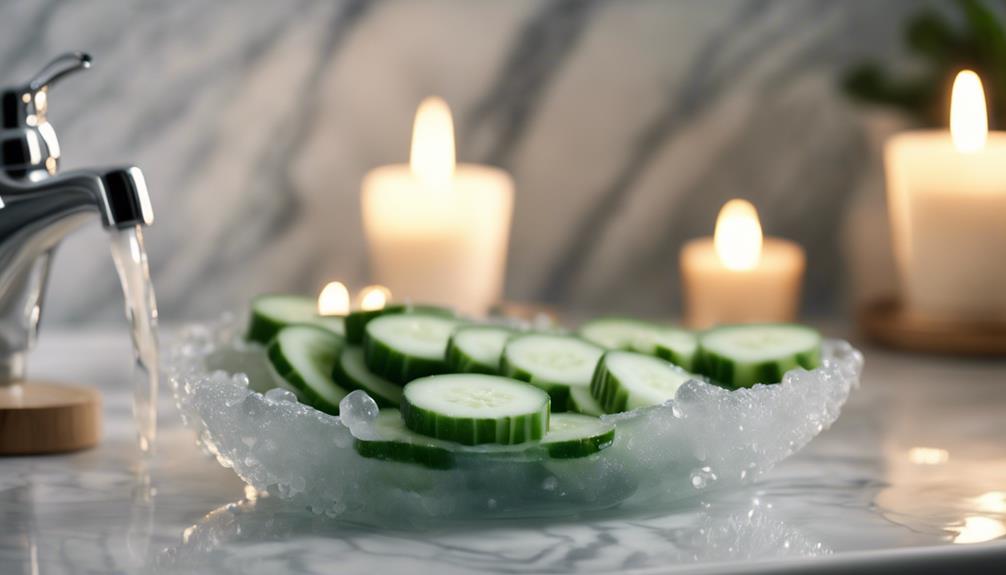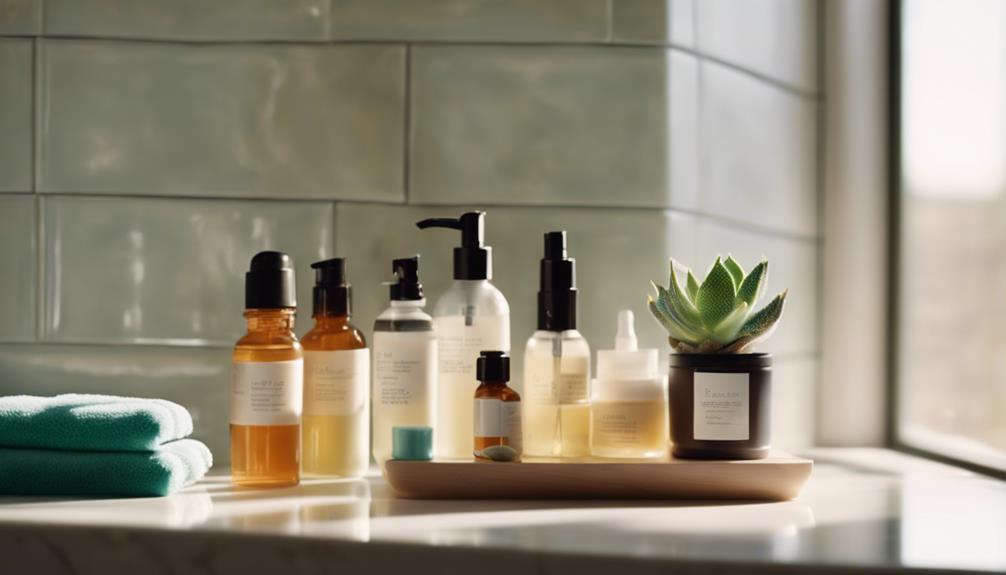Are you ready to kickstart your tanning journey this season? First, it’s important to determine your skin type as fair skin is prone to burning easily, while darker skin can handle more sun exposure. If you have fair skin, opt for shorter tanning sessions, whereas those with a darker complexion can spend more time under the sun. Remember, safety is crucial! Make sure to use sunscreen with at least SPF 30 and take it slow with your tanning sessions; patience is key to achieving a healthy glow! Keeping your skin hydrated and incorporating gentle exfoliation will help you achieve a streak-free tan. Interested in learning more about the best methods and aftercare tips? There’s plenty more to explore!
Key Takeaways
- Identify your skin type to tailor a safe and effective tanning plan suited to your needs.
- Begin tanning sessions 4-6 weeks before any events for fair skin, or 1-2 weeks for darker skin.
- Start with short tanning sessions (5-6 minutes) and gradually increase to 8 minutes while monitoring skin reactions.
- Always apply SPF 30 sunscreen before sun exposure and reapply every two hours to protect your skin.
Understanding Skin Types
To get the best tanning results, you need to understand your skin type and how it reacts to UV exposure.
Think of your skin as a unique canvas; fair skin might burn faster than olive or dark skin. If you're fair, you could start with shorter sessions, maybe just 5 minutes, while those with darker skin can immerse themselves a bit longer.
It's like adjusting the heat on a stove; too much can spoil the meal! Have you ever noticed how your skin reacts to the sun? That's a clue!
By knowing your skin type, you can create a tanning plan that works for you, ensuring you shine with a beautiful glow while keeping it safe.
Ready to embrace the sun?
Optimal Tanning Timing

Understanding your skin type sets the stage for determining the ideal tanning timing that will yield the best results for your unique complexion.
If you have fair skin, you'll want to start tanning about 4-6 weeks before your big day.
Olive-skinned friends can kick off their tanning journey 2-4 weeks ahead, while those with darker skin can achieve a lovely glow in just 1-2 weeks. Isn't that neat?
To get that perfect tan, aim for a consistent schedule of about three sessions a week.
Begin with shorter sessions—think 5-6 minutes—then gradually increase to about 8 minutes.
Safety and Skin Health

Prioritizing skin health is essential for enjoying a safe tanning experience and preventing long-term damage.
Think of your skin like a superhero: it protects you from UV rays, but it needs your help! Always wear sunscreen with at least SPF 30, and don't forget to reapply every two hours, especially if you're sweating or swimming.
Also, pay attention to your skin type. If you notice any irritation, it's a sign to slow down. Just like you wouldn't run a marathon without training, don't rush your tanning journey!
Effective Aftercare Practices

After taking care of your skin during tanning, effective aftercare practices can help maintain that gorgeous glow and keep your skin healthy.
First, grab a specialized post-tan moisturizer; it's like giving your skin a big hug!
Keep applying sunscreen daily, even if you're not tanning, because UV rays can still sneak up on you.
When it comes to exfoliating, think of it as gently polishing a shiny car—just don't overdo it! You want to keep that tan even and lovely.
Also, try to avoid activities that make you sweat too much; nobody wants a streaky tan!
Finally, drink plenty of water to keep your skin hydrated and glowing.
Best Tanning Methods

Choosing the best tanning methods can make a significant difference in achieving that desired sun-kissed glow while keeping your skin healthy and safe.
Whether you prefer sunbathing, tanning beds, or self-tanners, each method has its perks. If you're soaking up the sun, aim for those peak UV hours, but don't forget your sunscreen—SPF 30 or higher is your best friend!
For a quick fix, self-tanners can give you that bronze look without the sun's risks. Just remember, patch-testing is key!
Have fun with your tanning journey, but pay attention to your skin. If it starts feeling like a lobster, it's time to dial it back.
What method do you think you'll try first?
Frequently Asked Questions
What Should I Wear During Tanning Sessions for Comfort?
During tanning sessions, wear comfortable, loose-fitting clothing to avoid irritation. Opt for swimwear or cover-ups that allow sun exposure while protecting sensitive areas. Don't forget sunglasses to shield your eyes from harsh UV rays.
Can I Tan Indoors and Outdoors Simultaneously?
Imagine a painter blending colors on a canvas; you can indeed tan indoors and outdoors simultaneously. Just guarantee you balance exposure, monitor your skin's reactions, and prioritize safety for a harmonious glow.
How Do I Choose the Right Tanning Products?
To choose the right tanning products, consider your skin type and desired results. Look for products with quality ingredients, positive reviews, and SPF protection. Testing a patch is wise before full application to avoid irritation.
Can I Tan if I Have Sensitive Skin?
Yes, you can tan with sensitive skin, but be cautious. Start slowly, use gentle products, and prioritize sunscreen. Monitor your skin for reactions, and consult a professional to guarantee a safe tanning experience.
What Are the Signs of Over-Tanning or Sunburn?
Did you know that nearly 40% of people experience over-tanning? If your skin's red, itchy, or blistered, you've likely over-tanned. Always listen to your body and protect your skin to prevent damage.
What are the Risks of Tanning and How Can I Safely Start Tanning Outdoors?
When it comes to tanning outdoors, it’s important to be aware of the tanning salon risks prevention tips. Overexposure to UV rays can lead to sunburn, premature aging, and an increased risk of skin cancer. To safely start tanning outdoors, use sunscreen, seek shade, and limit your time in the sun.
Conclusion
Now that you're ready to plunge into your tanning journey, remember that patience is key—good things come to those who wait!
By understanding your skin type, timing your sessions, and caring for your skin, you'll shine like a star this season.
So, grab that sunscreen, track your progress, and don't forget to enjoy the sun safely.
Before you know it, you'll have that gorgeous glow you've been dreaming of.
Happy tanning, and let your radiance show!









